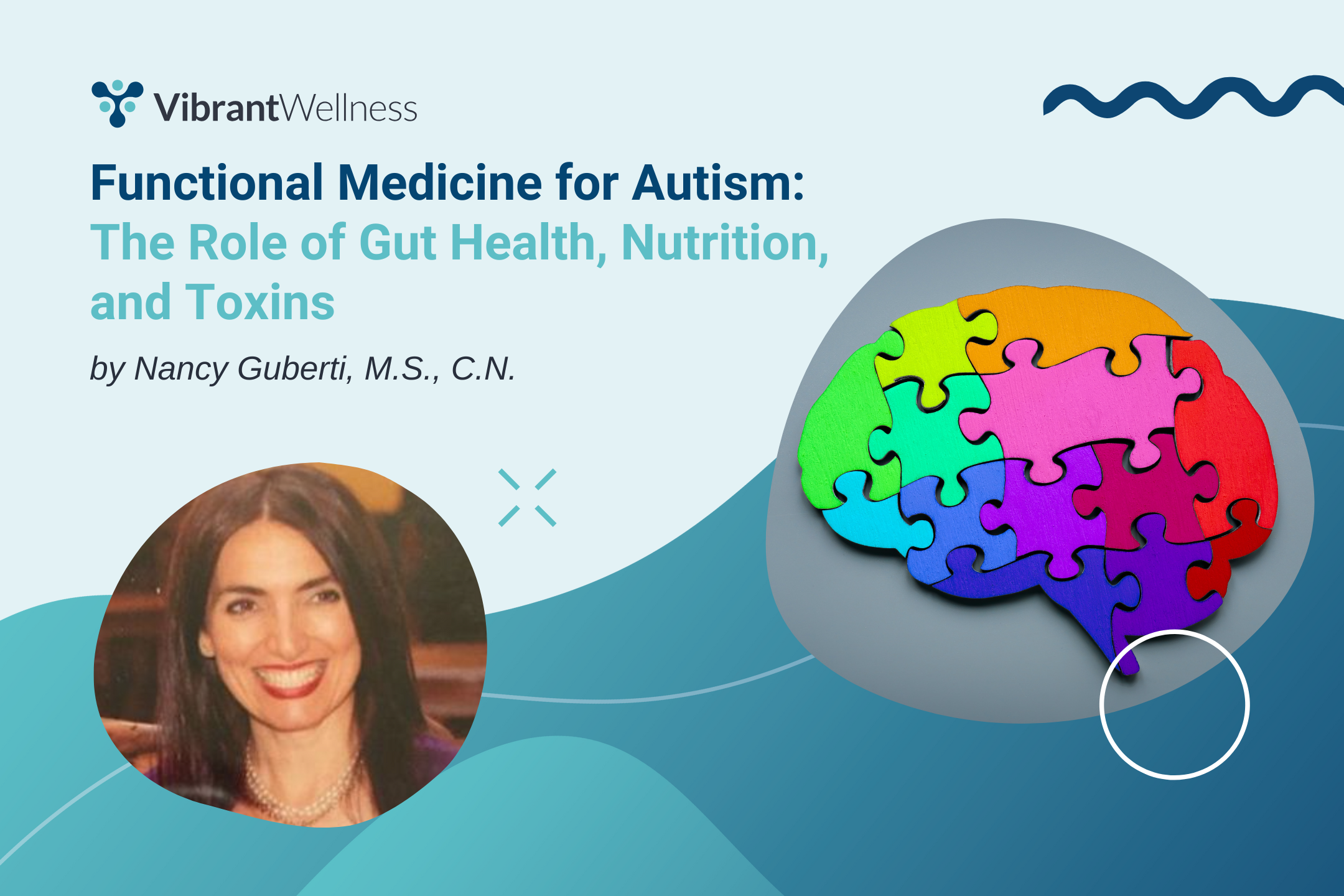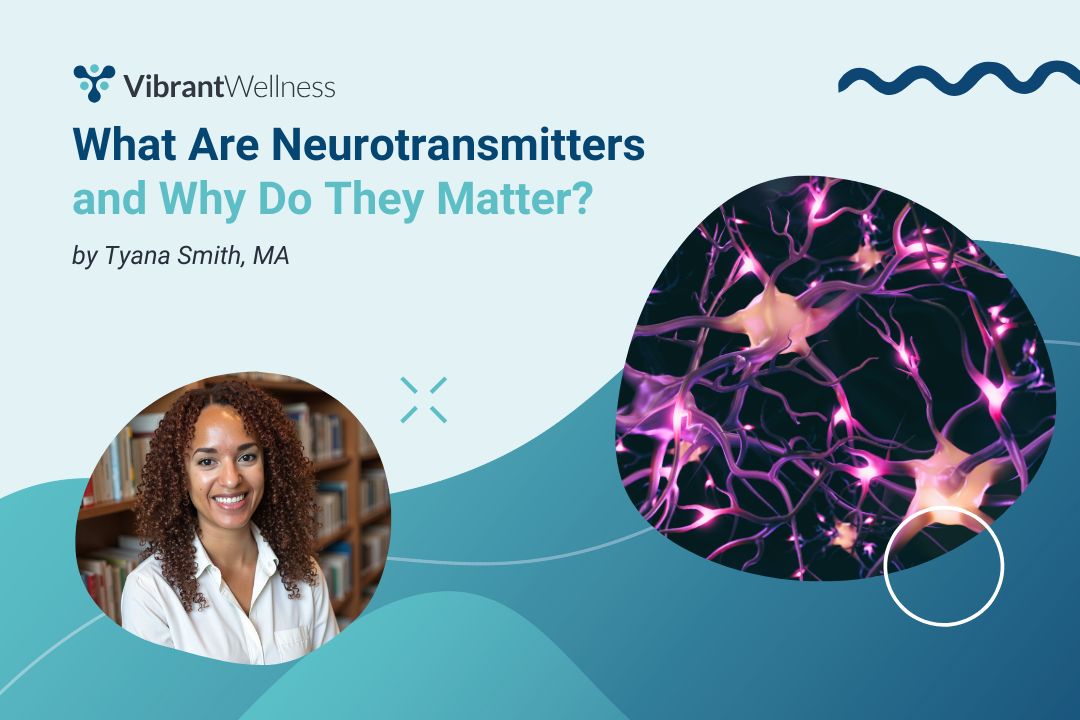How Mycotoxins Trigger Mast Cell Activation and Brain Inflammation
Many patients with chronic, unexplained symptoms have a history of mold exposure that’s never been fully explored. What begins as vague fatigue or headaches often reflects a deeper disruption in gut and neuroimmune function driven by hidden biotoxins.
Explore how mold toxins trigger brain fog and anxiety as well as other troubling symptoms through mycotoxins activating mast cells and microglia, compromising gut-brain barrier integrity, and contributing to neuroimmune dysfunction. We will also review how functional testing, including the Total Tox Burden, Gut Zoomer, and Micronutrient Panel, can help providers identify hidden biotoxin burdens and guide effective, personalized detoxification strategies.
Table of Contents
The Role of Biotoxins in Immune Disruption
Mold toxins are among the most under-recognized drivers of neuroinflammation and immune dysregulation in modern clinical practice. Mycotoxins such as ochratoxin A, gliotoxin, and aflatoxins, produced by indoor molds like Aspergillus, Penicillium, and Stachybotrys, are biologically reactive compounds.
Exposure can provoke chronic immune activation, increase gut and brain permeability, and impair mitochondrial and neurological function¹⁻³. The effects are especially pronounced in genetically susceptible individuals with impaired detoxification capacity or pre-existing immune sensitivity.

Mast Cells as Environmental Sentinels
Central to this inflammatory response is the activation of mast cells and microglia, two immune cell types that serve as primary responders to environmental stressors. Mast cells, located at the interfaces of the gut, skin, lungs, and brain, are equipped with pattern recognition receptors.
These receptors can respond to fungal antigens, biotoxins, and oxidative stress by releasing inflammatory mediators such as histamine, tryptase, leukotrienes, prostaglandins, and cytokines⁴⁻⁷. Mycotoxins like gliotoxin and ochratoxin A have been shown to directly stimulate mast cell degranulation and trigger a pro-inflammatory state that fuels downstream tissue damage⁸⁻¹⁰.
In the brain, mast cell-derived mediators interact with microglia, the central nervous system’s resident immune cells. This crosstalk amplifies neuroinflammatory signaling and alters neurovascular integrity, contributing to blood-brain barrier disruption, glial priming, and neuronal injury11-12.
Clinically, this connection between mycotoxins and mast cell activation may help explain why patients with chronic mold exposure often present with a constellation of symptoms, including brain fog, fatigue, light sensitivity, anxiety, and histamine intolerance, even when traditional testing is unremarkable13.
How Mycotoxins Activate Mast Cells and Disrupt the Gut-Brain Axis
Mast cells are strategically positioned along the body's barrier surfaces, including the gastrointestinal tract, skin, airways, and meninges, where they serve as sentinels of environmental stress14. These cells are uniquely responsive to fungal antigens and their metabolites, including mycotoxins such as gliotoxin, ochratoxin A, and aflatoxins15.
When activated, mast cells release a complex array of mediators: histamine, tryptase, leukotrienes, prostaglandins, and a range of cytokines. These biochemicals initiate and amplify inflammatory signaling throughout the body16.
Gut Permeability and Systemic Immune Activation
One of the most vulnerable interfaces impacted by mast cell activation is the gut lining. Mycotoxins have been shown to disrupt tight junction proteins, increase zonulin expression, and compromise intestinal barrier integrity17. This increased permeability allows lipopolysaccharides (LPS), food antigens, and microbial byproducts (PAMPs) to translocate into circulation, triggering systemic immune activation and placing further burden on mast cells18.
Once mast cells are activated in the gut, their inflammatory signals can travel systemically, influencing other tissues, including the brain19. This is particularly relevant given that mast cells are also located near neurons, glia, and cerebral blood vessels20. Their activation near the blood-brain barrier, in the perivascular space, can increase vascular permeability and prime microglia, the resident immune cells of the central nervous system21.

This axis of communication, the gut-brain-mast cell axis, may help explain how mold exposure leads to widespread neuroimmune symptoms22. Patients with chronic mold illness often report gastrointestinal symptoms such as bloating, food sensitivities, nausea, or IBS-like presentations in conjunction with brain fog, dizziness, fatigue, and emotional lability23. Clinically, this points to a bi-directional interaction between gut inflammation and brain inflammation, with mast cells acting as key transducers in both arenas24.
Recognizing Mast Cell Activation in Clinical Practice
In functional practice, identifying and addressing mast cell involvement is essential. Gut testing can provide insight into microbial imbalances and gut barrier dysfunction from mycotoxins. Recognizing further signs of mast cell activation, such as flushing, pruritus, tachycardia, and reactivity to supplements or foods, can help direct more personalized treatment strategies. This includes not only removing the mycotoxin burden through mold detox strategies but also stabilizing mast cells and restoring gut-immune homeostasis.
Symptoms and Clinical Patterns of Mold-Induced Brain Inflammation
Mold-related illness is notoriously difficult to precisely identify because it lacks established diagnostic criteria and rarely presents a single, clearly defined symptom. Instead, patients often experience a complex constellation of neurological, cognitive, and immunological complaints that overlap with many other chronic conditions. This is especially true when mycotoxins stimulate mast cell and microglial activation, two immune pathways that can profoundly impact brain function25.

Common neuroinflammatory symptoms reported by mold-exposed individuals include26:
- Brain fog and memory lapses
- Fatigue that is disproportionate to activity
- Light and sound sensitivity
- Headaches or pressure-like sensations
- Anxiety, irritability, or panic attacks
- Insomnia or non-restorative sleep
- Dizziness or balance issues
- Histamine intolerance and food sensitivities
These symptoms often fluctuate and are triggered or worsened by changes in the environment, stress, or diet. Many patients report a heightened sensitivity to chemicals, smells, supplements, or medications, hallmarks of mast cell instability.
Others may describe feeling “wired but tired,” emotionally fragile, or overstimulated in response to normal sensory input. This can reflect the downstream effects of chronic microglial activation and dysregulated blood-brain barrier permeability.27
Misidentified Root Causes: The Importance of a Systems-Based Approach
Clinically, mold exposure-induced brain inflammation is frequently mistaken for anxiety disorders, depression, POTS, fibromyalgia, chronic fatigue syndrome, or even early-onset neurodegenerative disease.28 This misdiagnosis often leads to symptom suppression rather than resolution, as the root cause, neuroimmune activation in response to mycotoxins, goes unaddressed.
A case pattern worth noting is the patient who has done “everything right” — clean diet, gut protocols, adrenal support, detox supplements — yet still experiences inflammation, reactivity, or mental fog. These individuals often have underlying mold exposure that has not yet been identified or adequately addressed. In such cases, the persistent symptoms are due not to what’s missing in the protocol but rather to what’s still present in their environment.
Recognizing this clinical pattern requires a high index of suspicion and a systems-based lens. Symptoms alone can’t confirm mold neuroinflammation, but they often tell a story when placed in context, especially when multiple systems are involved (neurological, immune, gastrointestinal) and conventional lab work appears unremarkable.

Functional Testing To Identify Mold Toxicity and Gut-Brain Dysfunction
When it comes to identifying mycotoxin-related illness, functional testing is a critical tool that helps translate vague, fluctuating neuroimmune symptoms of mold toxicity into actionable clinical data.
Mold and mycotoxins can impact multiple physiological systems simultaneously. Immune, neurological, gastrointestinal, and mitochondrial comprehensive testing can help map out which systems are most affected and guide the sequence of intervention.
Total Tox Burden 
The Total Tox Burden panel provides a high-resolution view of the body’s cumulative toxic load by measuring biomarkers across three major toxin categories: mycotoxins, heavy metals, and environmental chemicals.
For mold-related cases, the mycotoxin panel is especially revealing. It screens for common indoor toxins such as ochratoxin A, aflatoxins, gliotoxin, zearalenone, and trichothecenes, many of which are known to activate mast cells, increase gut permeability, and impair neurological function29. Identifying these toxins can validate a mold hypothesis and provide the clinical leverage needed to move forward with detoxification.
Gut Zoomer 
The Gut Zoomer is equally important, as it helps assess whether the patient’s gastrointestinal tract has been affected by mold exposure. Mycotoxins can alter the composition of the gut microbiota, reduce secretory IgA, and damage the intestinal lining, leading to dysbiosis and leaky gut30. The Gut Zoomer evaluates bacterial diversity, commensal balance, pathogenic overgrowth, digestive capacity, and markers of barrier function such as zonulin and calprotectin.
These insights allow clinicians to determine whether gut repair or microbiome support should be prioritized before initiating deeper detox strategies. The Gut Zoomer pairs well with Organic Acids Testing and the Fungal Antibodies test included in the Candida + IBS Profile to further qualify the likelihood of fungal dysbiosis and invasive barrier breach.
Micronutrient Panel
The Micronutrient Panel provides insight into the patient’s metabolic resilience and detoxification capacity. Mycotoxins often deplete key nutrients needed for phase I and II detox, including glutathione, selenium, zinc, magnesium, and B vitamins31.
By evaluating both intracellular and extracellular nutrient status, this panel helps identify specific deficiencies that may impair the patient’s ability to clear toxins and regulate inflammation. Addressing these micronutrient gaps can enhance the effectiveness of binder protocols and antioxidant therapies.
Neural Zoomer Plus 
For patients with prominent neurological symptoms, the Neural Zoomer Plus can reveal whether mold-triggered immune activation has progressed to autoimmune responses against neural antigens. This test screens for antibodies targeting the blood-brain barrier, NMDA and GAD receptors, microglia, myelin, and other key neural structures. While not all mold-exposed individuals will test positive, the presence of neural antibodies can help stratify risk and underscore the need for more aggressive neuroimmune support.
Oxidative Stress Profile
The Oxidative Stress Profile offers real-time insight into the burden of free radical damage within the body. Mycotoxins generate reactive oxygen species (ROS) and deplete antioxidant reserves, contributing to cellular damage and mitochondrial dysfunction32.
This panel measures key biomarkers of oxidative injury, including 8-OHdG, lipid peroxides, and dityrosine, that reflect the ongoing oxidative burden. Elevated results may explain persistent fatigue, poor detox response, or increased reactivity to supplements.
Clinical Detox and Recovery Protocols
Once mold toxicity has been identified, the next step is to design a personalized protocol that addresses the body’s unique bio-individual needs. Successful recovery from mold illness is not simply about “killing mold” or taking binders. It requires a strategic, phased approach that reduces exposure, stabilizes the immune system, supports drainage and detoxification pathways, and repairs the tissues affected by chronic inflammation33.
Step 1: Remove and Reduce Exposure
Before beginning any detox protocol, it is essential to assess and mitigate ongoing mold exposure. This includes:
- Inspecting living and work environments for signs of water damage or musty odors
- Using professional mold remediation when necessary
- Installing HEPA air filtration
- Avoiding contaminated foods such as grains, nuts, coffee, and dried fruit
Without source removal, protocols may yield limited results or exacerbate symptoms by mobilizing toxins faster than they can be cleared.
Step 2: Stabilize Mast Cells and Calm Inflammation
For patients with high reactivity, mast cell stabilizers can be essential during the early phases of treatment. Supportive strategies may include:
- Nutraceuticals like quercetin, luteolin, vitamin C, and DAO cofactors
- Histamine-lowering dietary strategies (e.g., low-histamine or low-oxalate diets)
- Calming the nervous system through vagus nerve stimulation, breathing practices, or gentle movement
Reducing immune reactivity sets the stage for more effective detoxification and allows the gut-brain axis to begin healing.
Step 3: Address Fungal Colonization and Dysbiosis
In many mold-exposed patients, especially those with gastrointestinal symptoms, underlying fungal overgrowth or dysbiosis plays a central role in maintaining inflammation and immune activation34. Mycotoxins not only suppress immune function but also create a favorable environment for opportunistic fungal species to colonize the gut, sinuses, lungs, or skin35.
Addressing this microbial imbalance is essential before deeper detoxification. Antimicrobial strategies may include:
- Saccharomyces boulardii to competitively inhibit Candida and restore microbial balance
- Botanical agents such as undecylenic acid, caprylic acid, berberine, oregano oil, and stabilized allicin
- Prescription antifungals like nystatin, fluconazole, itraconazole, or amphotericin B, when indicated
- Support for mucosal immunity and secretory IgA
Clearing colonization reduces fungal antigen load, decreases mast cell activation, and improves tolerance to subsequent detox protocols.

Step 4: Bind, Drain, and Detoxify
Once the gut is stabilized and fungal load reduced, detoxification can begin. This includes:
- Binders such as activated charcoal, bentonite clay, chlorella, or modified citrus pectin
- Bile flow support with bitter herbs, phosphatidylcholine, taurine, or castor oil packs
- Lymphatic support through gentle movement, dry brushing, sauna, or manual therapies
Binders should be titrated slowly and paired with hydration and regular elimination to minimize Herxheimer reactions.
Step 5: Rebuild Mitochondria and Antioxidant Capacity
Mold toxins can deplete ATP production and increase oxidative damage36. Mitochondrial recovery may include:
- N-acetylcysteine (NAC), glutathione, CoQ10, PQQ, ALA, Creatine, and L-carnitine
- Methylated B vitamins, magnesium, and amino acids for Krebs cycle support
- Polyphenols like resveratrol or curcumin for NRF2 activation and redox balance
Supporting mitochondrial function improves energy, mood, and detox resilience.
Step 6: Repair the Gut and Immune Barriers
After detox has begun, attention turns to restoring epithelial integrity and immune tolerance. This may involve:
- L-glutamine, colostrum, immunoglobulins (IgY/IgG), zinc carnosine, and mucilaginous herbs
- Probiotics or precision spore-forming microbes to reseed the microbiota
- Omega-3 fatty acids and butyrate to regulate inflammation and promote barrier repair
Restoring gut and blood-brain barrier function helps resolve immune dysregulation and prevents relapse.
Who Should Be Screened for Mold Exposure?
Mold-related illness often hides in plain sight, masquerading as anxiety, fatigue, IBS, fibromyalgia, or histamine intolerance. Because symptoms are multisystemic and frequently overlap with other chronic conditions, mold is often overlooked as the root cause.
Knowing who to screen, and when, is critical to catching this exposure early and avoiding years of trial-and-error treatment.
Individuals with a History of Water-Damaged Buildings
The most obvious candidates are those who have lived or worked in buildings with visible mold, past flooding, roof leaks, or chronic humidity. Even if the mold is no longer visible, prior exposure can leave a lasting imprint on immune function. This is particularly important for people who have worked in hospitals, schools, libraries, or office buildings with known moisture issues.
Patients with Multisystem, Treatment-Resistant Symptoms
When patients present with chronic fatigue, brain fog, dizziness, light sensitivity, insomnia, gut dysfunction, chemical sensitivity, and mood instability, and these symptoms don’t improve with standard protocols, mold should be on the differential. If someone has “done everything right” but still feels inflamed and reactive, toxicant burden may be the missing piece.
-1.png?width=1080&height=405&name=2024%20-%20A%20Comprehensive%20Approach%20to%20Recurrent%20UTIs%20(8)-1.png)
Those with Signs of Mast Cell Activation or Histamine Intolerance
Mold exposure can trigger mast cell degranulation and exacerbate symptoms such as flushing, itching, hives, tachycardia, anxiety, food reactions, or sensitivity to smells and chemicals. If a patient has MCAS-like symptoms that worsen in certain environments or during detox protocols, clinicians should consider mold toxicity.
Individuals with Gut Issues and Fungal Overgrowth
Chronic bloating, gas, constipation, diarrhea, or fungal infections may indicate fungal dysbiosis. Because mold exposure alters gut microbiota and impairs mucosal immunity, these patterns may be a downstream consequence of toxicant-driven immune suppression.
Patients with Neurological or Psychiatric Diagnoses
Mold exposure may worsen or trigger neuroinflammatory conditions such as anxiety, depression, OCD, ADHD, and cognitive decline in susceptible individuals37. This is especially relevant in cases where symptoms emerge after moving into a new home or building, or during a period of high humidity.
Individuals Reacting to Detox Protocols or Supplements
When starting otherwise well-tolerated therapies causes more inflammation, fatigue, or symptoms, this may reflect toxin mobilization in an already burdened system. Patients who cannot tolerate binders, probiotics, methylated B vitamins, or herbal protocols may be carrying a hidden mold burden that is overwhelming their detox capacity.
Mold, Mast Cells, and the Modern Neuroimmune Crisis
Mold and mycotoxins represent a hidden epidemic, one that silently disrupts the gut, brain, immune system, and mitochondria in ways that are often missed by conventional lab testing. For patients with persistent, multisystem symptoms that don’t respond to standard care, mold may be the missing link.
![]()
The mechanisms behind chronic mold exposure and brain function impact are now clear: Mycotoxins can activate mast cells, impair barrier integrity, and inflame the brain through microglial priming. This neuroimmune activation can manifest as brain fog, fatigue, anxiety, insomnia, and chemical sensitivity, even in patients who appear outwardly healthy. Left unaddressed, it can lead to a downward spiral of immune reactivity, neurological decline, and treatment resistance.
Fortunately, with the right tools and framework, mold illness can be identified and reversed. Functional testing, including the Total Tox Burden, Gut Zoomer, Micronutrient Panel, Organic Acids Test, Oxidative Stress Profile, and Neural Zoomer Plus, offers a systems biology lens to uncover the true drivers of dysfunction. These tests do more than confirm mold exposure; they illuminate how the body is responding, where it's struggling, and how to guide recovery.
Ultimately, mold toxicity can be a problem of immune overload, poor resilience, and missed context. By learning to recognize the signs, interpret the labs, and individualize the path to healing, clinicians can help patients reclaim their cognitive clarity, energy, and quality of life, often after years of unexplained illness.
About the Author
Brendan Vermeire is a Mental and Metabolic Health Scientist, Functional Medicine Educator, and Board-Certified Holistic Health Practitioner. After an injury ended his Navy SEAL training, he shifted to personal training, discovered functional lab testing, and became a leading expert in metabolic health. He founded the Metabolic Solutions Institute and its nonprofit arm, dedicated to advancing mental health science. He also created The Mental M.A.P.™ lab panel, the FMHP™ Certificate Program, and the NeuroCeuticals™ supplement line.
- References:
- Straus DC. The possible role of fungal contamination in sick building syndrome. Front Biosci. 2009;1(1):33-37.
- Peraica M, Radic B, Lucic A, Pavlovic M. Toxic effects of mycotoxins in humans. Bull World Health Organ. 1999;77(9):754-766.
- Jarvis BB. Chemistry and toxicology of molds isolated from water-damaged buildings. Adv Appl Microbiol. 2002;52:33-118.
- Theoharides TC, Valent P, Akin C. Mast cells, mastocytosis, and related disorders. N Engl J Med. 2015;373(2):163-172.
- Kritas SK, Saggini A, Cerulli G, Caraffa A, Antinolfi P, Pantalone A, et al. Impact of mold on mast cell-cytokine immune response. J Biol Regul Homeost Agents. 2018;32(2):451–454.
- Ratnaseelan AM, Tsilioni I, Theoharides TC. Effects of Mycotoxins on Neuropsychiatric Symptoms and Immune Processes. Clin Ther. 2018;40(6):903–917.e3.
- Conti P, Caraffa A, D Ovidio C, et al. Impact of Fungi on Immune Responses. Clin Ther. 2018;40(6):902–902.e3.
- Hamilton DE. Understanding Mycotoxin-Induced Illness: Part 1. Altern Ther Health Med. 2022;28(S1):22–27.
- Draberova L, Bugajev V, Halova I, et al. Molecular Mechanisms of Mast Cell Activation by Cholesterol-Dependent Cytolysins. Front Immunol. 2021;12:627899.
- Theoharides TC, Tsilioni I, Patel AB, Doyle R. Recent advances in our understanding of mast cell activation—or should it be mast cell mediator disorders? Expert Rev Clin Immunol. 2019;15(6):639–651.
- Skaper SD, Giusti P, Facci L. Neuroinflammation, microglia and mast cells in the pathophysiology of neurocognitive disorders: a review. CNS Neurol Disord Drug Targets. 2015;14(4):452–463.
- Forsythe P. Mast cells in neuroimmune interactions. Trends Neurosci. 2019;42(1):43–55.
- Afrin L, Khoruts A. Mast cell activation disease and microbiotic interactions. Clin Ther. 2015.
- Akin C. Mast cell activation syndromes. J Allergy Clin Immunol. 2017.
- Li J, Deng Y, Wang Y, Nepovimova E, Wu Q, Kuča K. Mycotoxins have a potential of inducing cell senescence: a new understanding of mycotoxin immunotoxicity. Environ Toxicol Pharmacol. 2023.
- Råding M, et al. Assay of mast cell mediators. Methods Mol Biol. 2015.
- Ren Z, et al. Progress in mycotoxins affecting intestinal mucosal barrier function. Int J Mol Sci. 2019.
- Albert-Bayo M, et al. Intestinal mucosal mast cells: key modulators of barrier function and homeostasis. Cells. 2019.
- Mittal AM, et al. Mast cell neural interactions in health and disease. Front Cell Neurosci. 2019.
- Dong HQ, et al. Mast cells and neuroinflammation. Med Sci Monit Basic Res. 2014.
- Ocak U, et al. Targeting mast cell as a neuroprotective strategy. Brain Inj. 2019.
- Li K, et al. Natural products for Gut-X axis: pharmacology, toxicology and microbiology in mycotoxin-caused diseases. Front Pharmacol. 2024.
- Maresca M, et al. Some food-associated mycotoxins as potential risk factors in humans predisposed to chronic intestinal inflammatory diseases. Toxicon. 2010.
- Bhuiyan P, et al. Bidirectional communication between mast cells and the gut-brain axis in neurodegenerative diseases: avenues for therapeutic intervention. Brain Res Bull. 2021.
- Traina G. Mast cells in gut and brain and their potential role as an emerging therapeutic target for neural diseases. Front Cell Neurosci. 2019.
- O'Callaghan J, et al. Neuroinflammation disorders exacerbated by environmental stressors. Metabolism. 2019.
- Jha MK, et al. Association of neuropsychiatric symptoms with inflammation: review findings from the workshop on brain immune interactions. Psychoneuroendocrinology. 2024.
- Tansey M, et al. Neuroinflammation in Parkinson's disease: its role in neuronal death and implications for therapeutic intervention. Neurobiol Dis. 2010.
- Song C, et al. Neurotoxic mechanisms of mycotoxins: focus on aflatoxin B1 and T-2 toxin. Environ Pollut. 2024.
- Liew WP-P, et al. Mycotoxin: its impact on gut health and microbiota. Front Cell Infect Microbiol. 2018.
- Guilford F, et al. Deficient glutathione in the pathophysiology of mycotoxin-related illness. Toxins. 2014.
- Islam MT, et al. Mycotoxin-assisted mitochondrial dysfunction and cytotoxicity: unexploited tools against proliferative disorders. IUBMB Life. 2018.
- Hope J. A review of the mechanism of injury and treatment approaches for illness resulting from exposure to water-damaged buildings, mold, and mycotoxins. Sci World J. 2013.
- Iliev I, et al. Fungal dysbiosis: immunity and interactions at mucosal barriers. Nat Rev Immunol. 2017.
- Sun Y, et al. An update on immunotoxicity and mechanisms of action of six environmental mycotoxins. Food Chem Toxicol. 2022.
- Silva EO, et al. Mycotoxins and oxidative stress: where are we? Toxins. 2018.
- Ratnaseelan AM, et al. Effects of mycotoxins on neuropsychiatric symptoms and immune processes. Clin Ther. 2018.
Regulatory Statement:
The information presented in case studies have been de-identified in accordance with the HIPAA Privacy protection.
The general wellness test intended uses relate to sustaining or offering general improvement to functions associated with a general state of health while making reference to diseases or conditions. This test has been laboratory developed and its performance characteristics determined by Vibrant America LLC and Vibrant Genomics, a CLIA-certified and CAP-accredited laboratory performing the test. The lab tests referenced have not been cleared or approved by the U.S. Food and Drug Administration (FDA). Although FDA does not currently clear or approve laboratory-developed tests in the U.S., certification of the laboratory is required under CLIA to ensure the quality and validity of the test.

Brendan Vermeire

Find a Provider- Take Control of Your Health
Connect with a provider to access Vibrant Wellness specialty tests and personalized insights that support your long-term health.
Related Articles
Autism spectrum disorder (ASD) affects 1 in 36 children in the United States, a number that continues to climb.¹ Globally, estimates suggest that approximately ...

Urinary tract infections (UTIs) are among the most common bacterial infections worldwide, impacting millions of individuals annually. The Beyond UTI: Unlocking ...

Clinically reviewed by Adair Anderson, MS, RDN, LDN The brain relies on neurotransmitters to keep everything from mood to digestion running smoothly. An imbalan...




